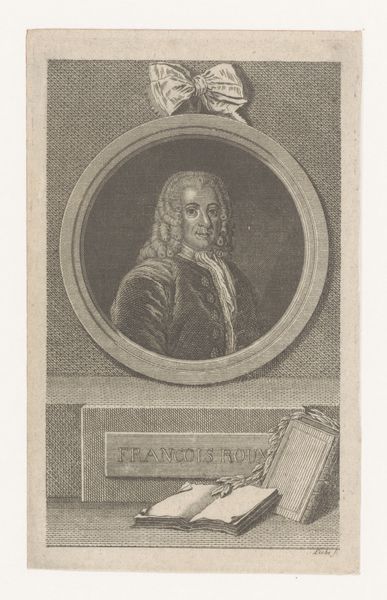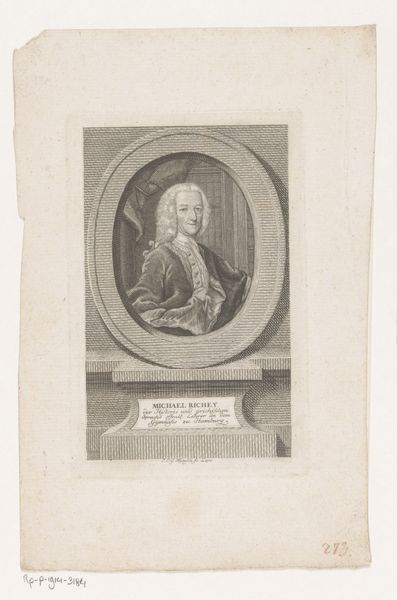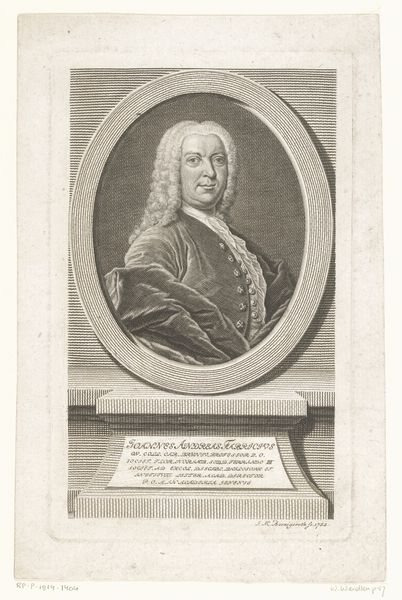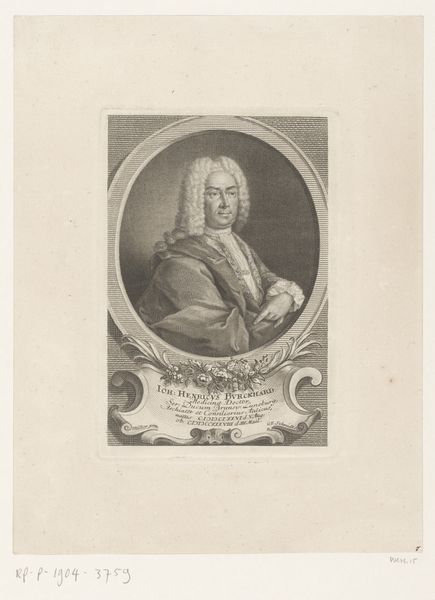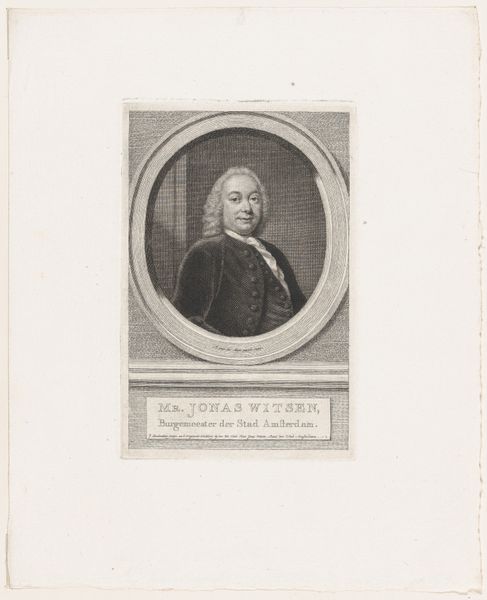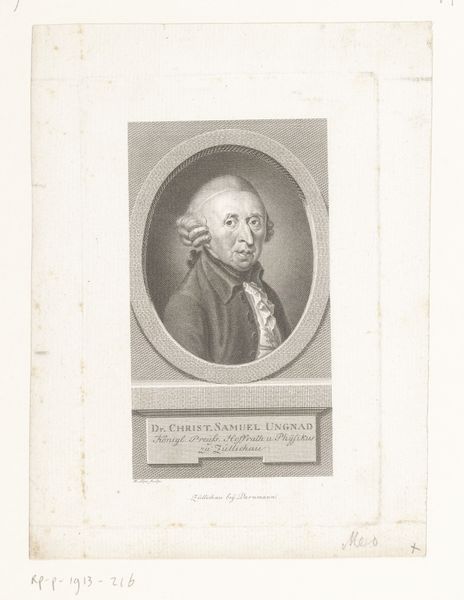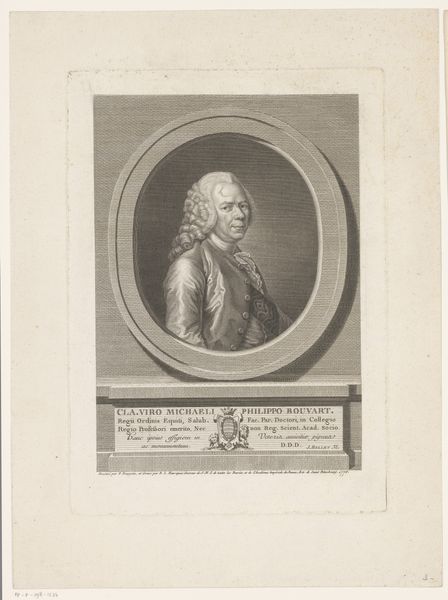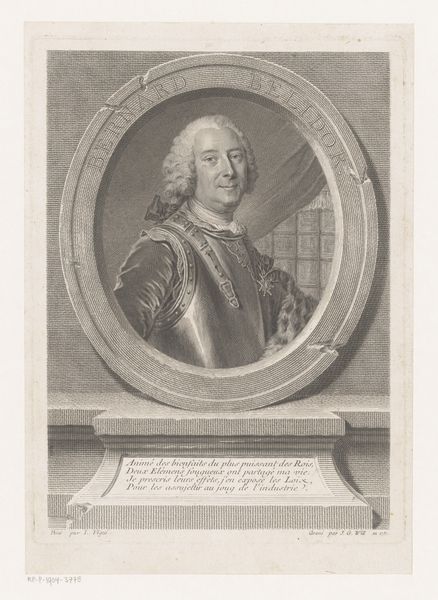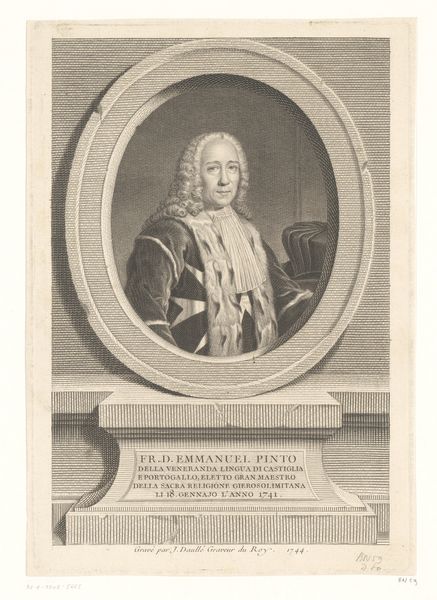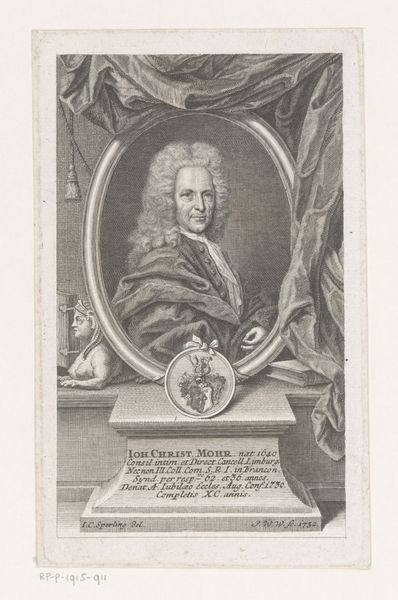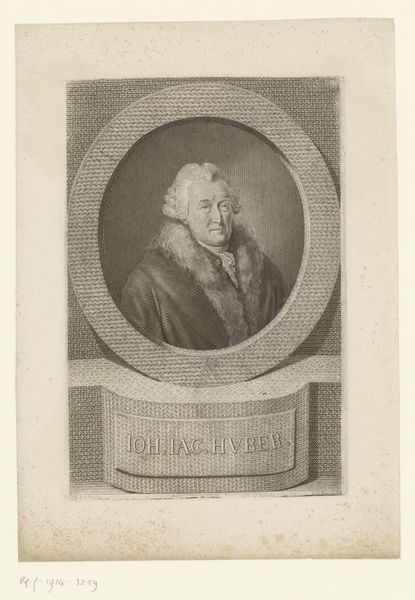
print, engraving
#
portrait
#
neoclacissism
# print
#
historical photography
#
15_18th-century
#
history-painting
#
academic-art
#
engraving
Dimensions: height 203 mm, width 150 mm
Copyright: Rijks Museum: Open Domain
Curator: This is a portrait of Georg Leopold Hoyer, Patricius. It’s an engraving dating back to 1759, crafted by Johann Friedrich Bause. What are your immediate thoughts? Editor: An oval portal onto the 18th century! There's an air of guarded privilege here – a controlled expression, framed by the stark lines of the engraving itself. Curator: Absolutely. Consider the context of Neoclassicism— the age of reason emphasizing order, restraint, and a return to classical ideals. We see it here in the structured composition, which conveys Hoyer's social standing. Editor: Indeed. The oval format itself carries symbolic weight, doesn’t it? A contained world, perhaps? His wig, the inscription... These are not simply aesthetic choices but potent emblems of identity and status within that era's cultural landscape. Curator: Let's think more critically about that status. As an Imperial Senator, Hoyer belonged to an elite circle wielding considerable power. This portrait reinforces that position but it is also deliberately constructed to perpetuate the established hierarchy. Editor: Look closer at the coat of arms beneath the portrait. The eagles and floral motifs offer a glimpse into the symbolic language of lineage and power. They are practically pronouncements. What were the rules or conditions under which someone like Hoyer entered into and secured his place in that world? Curator: Good questions. Considering issues of access and social mobility, this print makes visible who gets memorialized. While Bause's technical skill is remarkable, we should not forget how artistic representation upholds historical power structures. Editor: It makes me wonder what he wanted to convey about himself. I get a real sense of the effort to embody authority and tradition within that frame, doesn't it? Curator: Exactly. It's not just about surface-level appearance; it's about projecting a specific persona linked to power. We are left to deconstruct how these symbols have played their role in creating, reinforcing, and transmitting dominance and authority. Editor: I appreciate seeing the conversation beyond the man as the image reminds us how appearances and what's memorialized are deeply interconnected. Curator: Agreed. And looking at it this way challenges viewers to recognize these mechanisms throughout history.
Comments
No comments
Be the first to comment and join the conversation on the ultimate creative platform.
